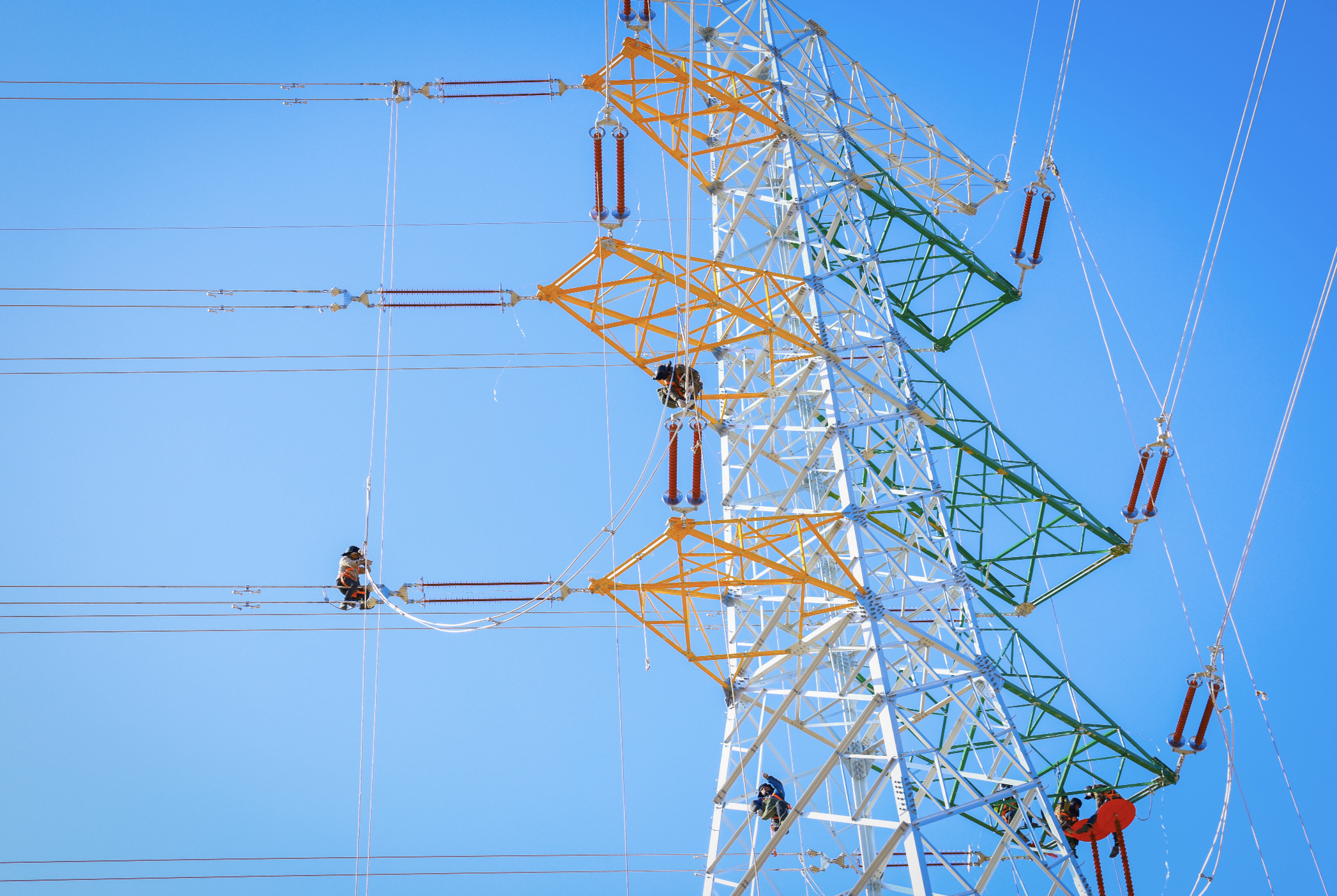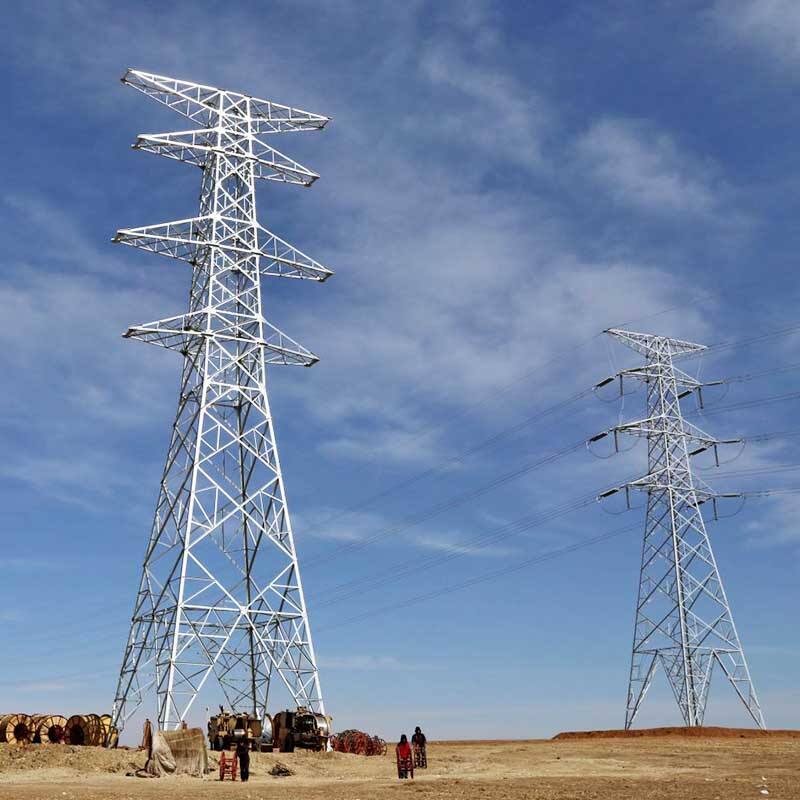Primary Functional Categories of Electric Towers
Suspension Towers: Supporting Conductors Without Direction Change
Suspension towers form a key part of high voltage power lines, designed specifically to hold overhead wires while keeping them going straight ahead. What makes these towers so important is their ability to create long stretches between support points, allowing electricity to travel without interruption. The towers basically take on the weight of all those heavy cables, keeping everything taut enough to prevent sagging that could cause problems down the line. Most of the time, engineers place these structures along straight paths where they can do their job best. They're essential for moving power over vast areas, making sure homes and businesses stay connected even when the distance between substations gets pretty big.
Tension Towers: Anchoring Wires at Angles and Span Ends
When overhead power lines need to change direction, tension towers come into play. These structures serve as anchor points at key locations along transmission lines, helping manage the stress that builds up, particularly around those sharp bends we see in mountainous areas or across valleys. The design of tension towers needs to be really strong because they face all sorts of environmental challenges day after day. Think about wind pushing against them for hours on end or heavy ice buildup during winter storms. All this ensures that the electrical wires stay properly secured despite whatever Mother Nature throws their way. Without this kind of structural strength, our power grid wouldn't hold up so well when crossing difficult landscapes where straight paths just aren't possible.
Transposition Towers: Balancing Electrical Loads Through Position Adjustment
Transposition towers are basically designed to rotate conductors around their axes, which helps balance out electrical loads between different phases. When these loads get balanced properly, it cuts down on energy losses and makes the whole power grid work better. Engineers place these towers at key points along transmission lines so they can maintain electrical balance throughout the network. This prevents those annoying harmonic distortions from building up, something that really messes with how well power flows through the system. Without this kind of balancing act, we'd see all sorts of problems in our homes and businesses when trying to run appliances and equipment normally.
Structural Design Variations in Electric Towers
Lattice Towers: Crisscross Steel Framework for High-Voltage Lines
Lattice towers have become standard equipment for transmitting high voltage electricity across long distances, thanks to their distinctive crisscross steel frames. The way these towers are built gives them remarkable strength while using materials efficiently, so companies save money without compromising on quality. These structures handle massive electrical loads without issue and stand up well against harsh weather conditions, something that matters a lot when installing power lines through mountainous regions or coastal areas prone to storms. Maintenance crews appreciate the open design because workers can easily reach different parts of the tower during inspections or repairs, keeping operations running smoothly most of the time. Plus, since lattice towers take up less ground space compared to other options, they work well in tight spots near highways, industrial zones, or urban developments where land isn't plentiful.
Monopole Towers: Single-Pole Urban Solutions
When cities run out of room, monopole towers offer a smart alternative to bulkier structures. Basically just one strong steel pole standing alone, these towers hold up well against weather and don't stick out like sore thumbs in most settings. City officials love them because they save money and get installed fast compared to other options. Take downtown areas for instance, where every square foot counts. The simple shape means crews can put them up quicker without tearing up streets or parks as much. Plus, there's something about how they look that just fits better in crowded spaces. They don't create those ugly antenna forests we see elsewhere, yet still manage to carry all the signals needed for modern communications infrastructure.
Tubular Towers: Space-Efficient Hollow Designs
Tubular towers stand out because they take up less space than traditional designs. These towers basically work as hollow tubes that give good strength without needing too much material. The whole concept actually makes these structures lighter on average, which cuts down on what it takes to move them around and put them together at the site. Their round shape helps them handle wind better too. Wind just flows around them instead of pushing against them head on, so there's less risk when storms hit hard. For places where room is tight like urban settings or mountainous regions, these towers make a lot of sense. Plus, since they have smaller surfaces overall, installing them generally requires fewer materials and labor hours compared to other types. Many builders now see this as part of green building strategies since it saves both money and resources in the long run.
Guyed Towers: Cable-Supported Tall Structures
Guyed towers rise above other tower types thanks to their network of tensioned cables that hold everything together. What makes this setup so good is that it can reach impressive heights without needing tons of building material, saving money and reducing resource consumption at the same time. These towers work particularly well for things like cell phone signals and power lines running across areas where the ground isn't very firm. Still, getting those guy wires right matters a lot for keeping the whole thing stable. Engineers need to place each wire carefully and anchor them properly. Plus they have to follow strict safety rules to avoid accidents and keep services running smoothly over time.
Terrain-Specific Tower Configurations
Mountainous Area Adaptations
Designing electric towers for mountain areas presents some real headaches because of the rough terrain. The towers need special modifications to handle steep slopes and rocky ground, so they don't fall over during rockslides or when hit by bad storms. Height matters too since mountains affect how signals travel through the air. Engineers have to get creative with their designs to make sure everything works properly while keeping workers safe. Some companies even test prototypes in similar conditions before installation to catch any potential issues early on.
Flat Terrain Span Limitations (Per IS 5613 Standards)
Flat land presents its own set of problems compared to mountains when it comes to power lines. The IS 5613 regulations come into play here because they specify how far apart towers should be placed. This spacing keeps the wires from drooping too much between supports which could lead to safety issues or system failures. Following these rules helps keep things running smoothly while saving money on repairs down the road. For anyone building or maintaining electrical networks across plains, sticking to IS 5613 isn't just good practice it's practically necessary if we want our grids to last for years without constant fixes and replacements.

Material Composition and Construction Methods
Galvanized Steel vs. Concrete Foundations
Electric tower builders usually look at galvanized steel versus concrete foundations when picking materials because both have their own strengths. Steel wins out in many cases thanks to its toughness, lasting power, and ability to fight off rust even after years of exposure. That makes it great for places where weather conditions are tough on equipment. Concrete, meanwhile, gives rock solid support that's hard to beat, particularly important in regions with weak or unstable ground. The weight gets spread out better with concrete bases, which cuts down on problems later on. Most companies decide based on what kind of environment they're working in plus how much money they want to spend over time. Each option works better under different situations depending on what matters most for the project at hand.
Composite Materials in Modern Tower Manufacturing
Modern tower manufacturing is seeing major changes thanks to composite materials that mix different substances to make structures both stronger and lighter. These advanced materials boost how well electricity travels through towers while cutting down on regular maintenance needs. As material science progresses, we're seeing more composites built right into tower designs, which means less time spent fixing things and saving money on repairs. The fact that composite materials stay strong despite being light makes installation much simpler too, and saves cash over years of operation. When companies start using these new materials in their towers, they're basically rewriting the rules for what's possible in terms of getting power from one place to another reliably and sustainably.
Voltage Capacity and Operational Applications
Low-Voltage Distribution vs. High-Voltage Transmission
Picking the correct type of tower matters a lot when dealing with either low voltage or high voltage systems for power distribution. Low voltage networks play a big role in cities where they supply electricity to homes and businesses throughout neighborhoods. These systems work at much lower voltages which makes sense for short runs and places that don't need massive amounts of power. On the flip side, high voltage transmission towers come into play when we need to move electricity over long distances. Such towers have to be built stronger since they carry heavier loads. Most often made from steel, these structures must withstand both the pull on the lines and the sheer weight of several thick cables strung between them. Getting familiar with how specs differ between tower types lets engineers pick what works best for their particular situation, ultimately leading to better performing electrical infrastructure across different regions.
Substation Connection Requirements
Getting reliable connections at substations means following certain standards that determine how power towers are designed and built. When constructing towers for substations, they need to match up with connection specs so everything works together properly with what's already there. The rules usually specify things like tower size and materials needed to get electricity flowing effectively throughout the system while keeping everything running smoothly. Safety regulations matter too because they set minimum requirements for things like insulation levels and clearance distances between components. Following all these guidelines isn't just paperwork either it actually makes a real difference on site where engineers deal with day-to-day maintenance issues without constant surprises from improperly installed equipment disrupting service for customers.
FAQ
What are the primary types of electric towers used in transmission systems?
Primary types of electric towers include suspension towers, tension towers, and transposition towers. Each type serves distinct purposes within transmission systems, such as supporting conductors along straight paths, anchoring wires at curves, and balancing electrical loads, respectively.
How are lattice towers advantageous for high-voltage transmission?
Lattice towers are beneficial for high-voltage transmission due to their crisscross steel framework, offering strength and stability while optimizing material use. Their design allows them to support heavy loads and withstand harsh weather conditions, making them efficient and cost-effective.
Why are monopole towers preferred in urban areas?
Monopole towers are preferred in urban settings because their single-pole design is space-efficient and visually unobtrusive. They are cost-effective, quick to install, and reduce environmental disruption, making them ideal for densely populated regions.
What materials are commonly used in electric tower construction?
Common materials used in electric tower construction include galvanized steel for its strength and corrosion resistance, and concrete foundations for stability, especially in soft soil areas. Composite materials are also being used increasingly to enhance durability and reduce tower weight.
How do voltage levels impact tower selection?
Voltage levels greatly influence tower selection. Low-voltage towers are suitable for short distances and urban distribution, while high-voltage towers are required for long-distance transmission. High-voltage towers need greater structural capacity to manage the tensions of heavy conductors.
Table of Contents
- Primary Functional Categories of Electric Towers
- Structural Design Variations in Electric Towers
- Terrain-Specific Tower Configurations
- Material Composition and Construction Methods
- Voltage Capacity and Operational Applications
-
FAQ
- What are the primary types of electric towers used in transmission systems?
- How are lattice towers advantageous for high-voltage transmission?
- Why are monopole towers preferred in urban areas?
- What materials are commonly used in electric tower construction?
- How do voltage levels impact tower selection?

